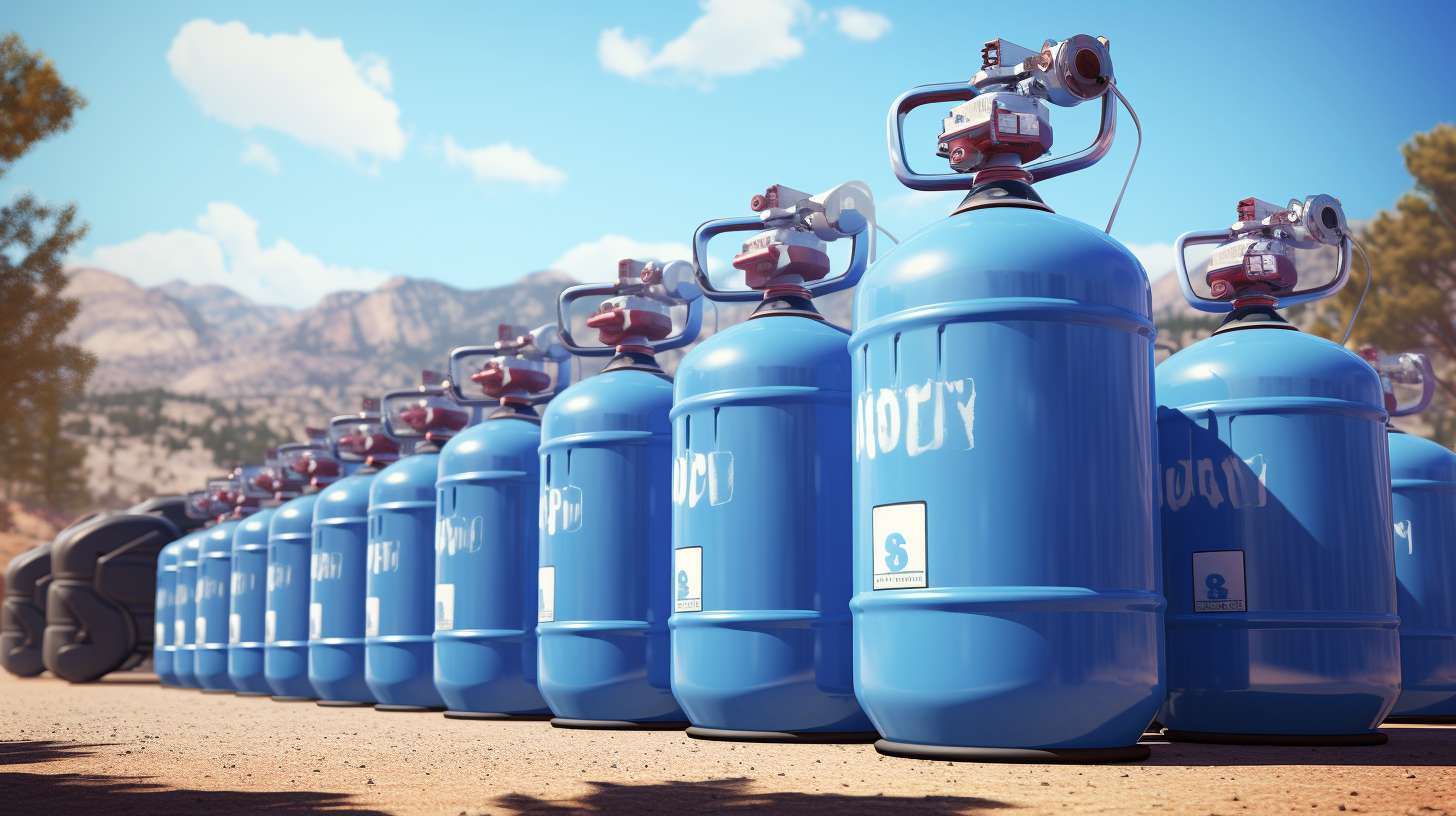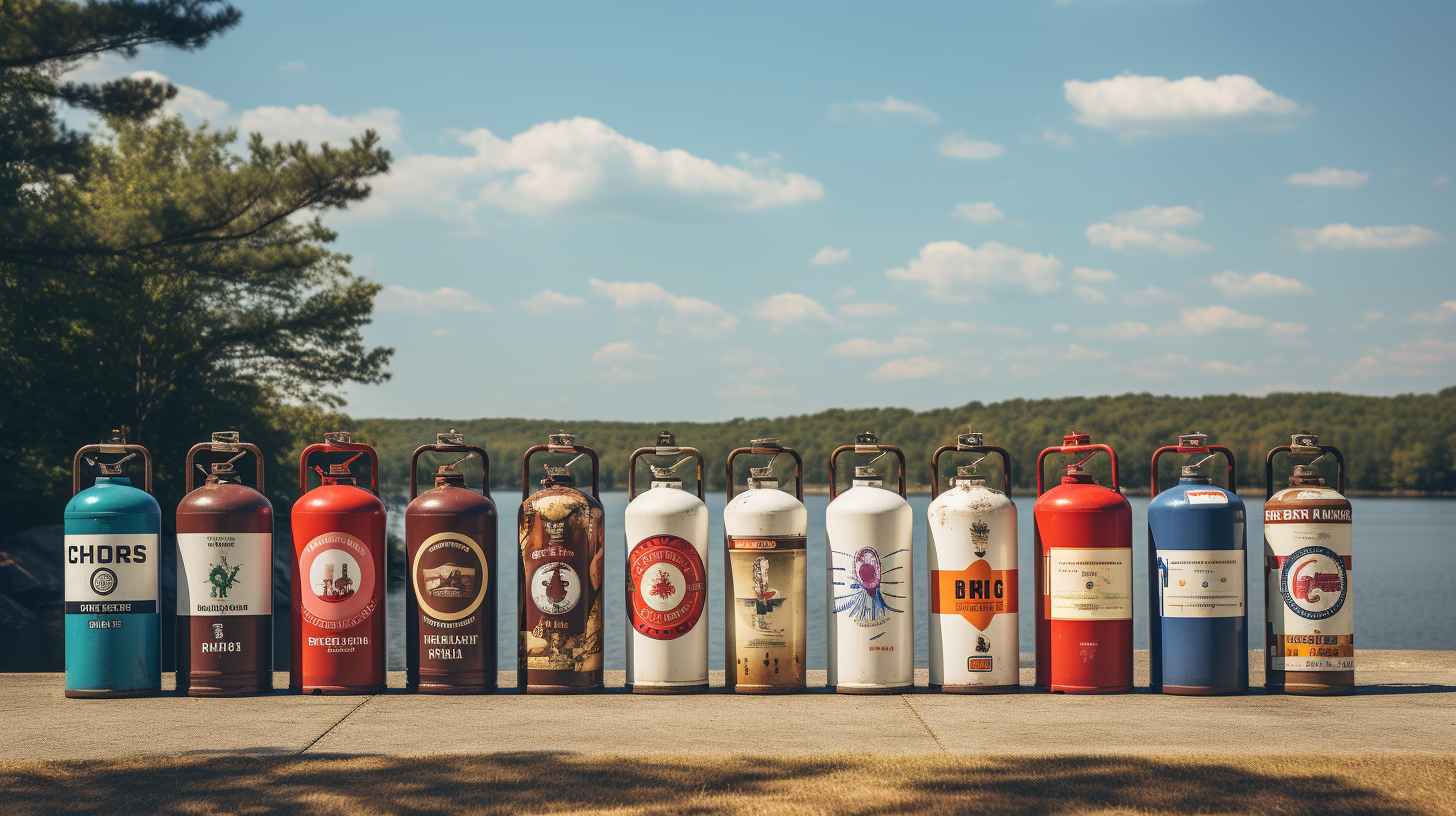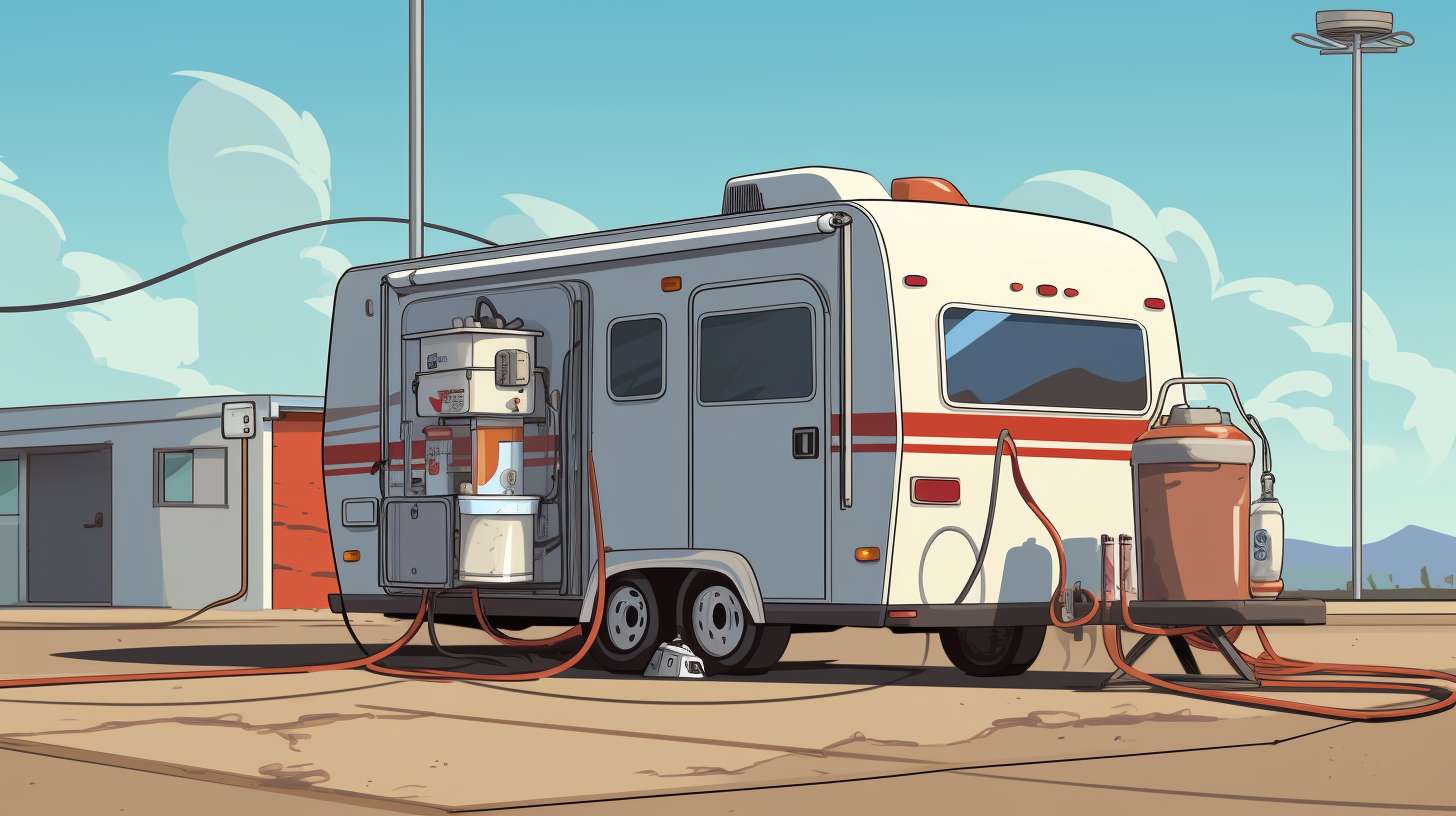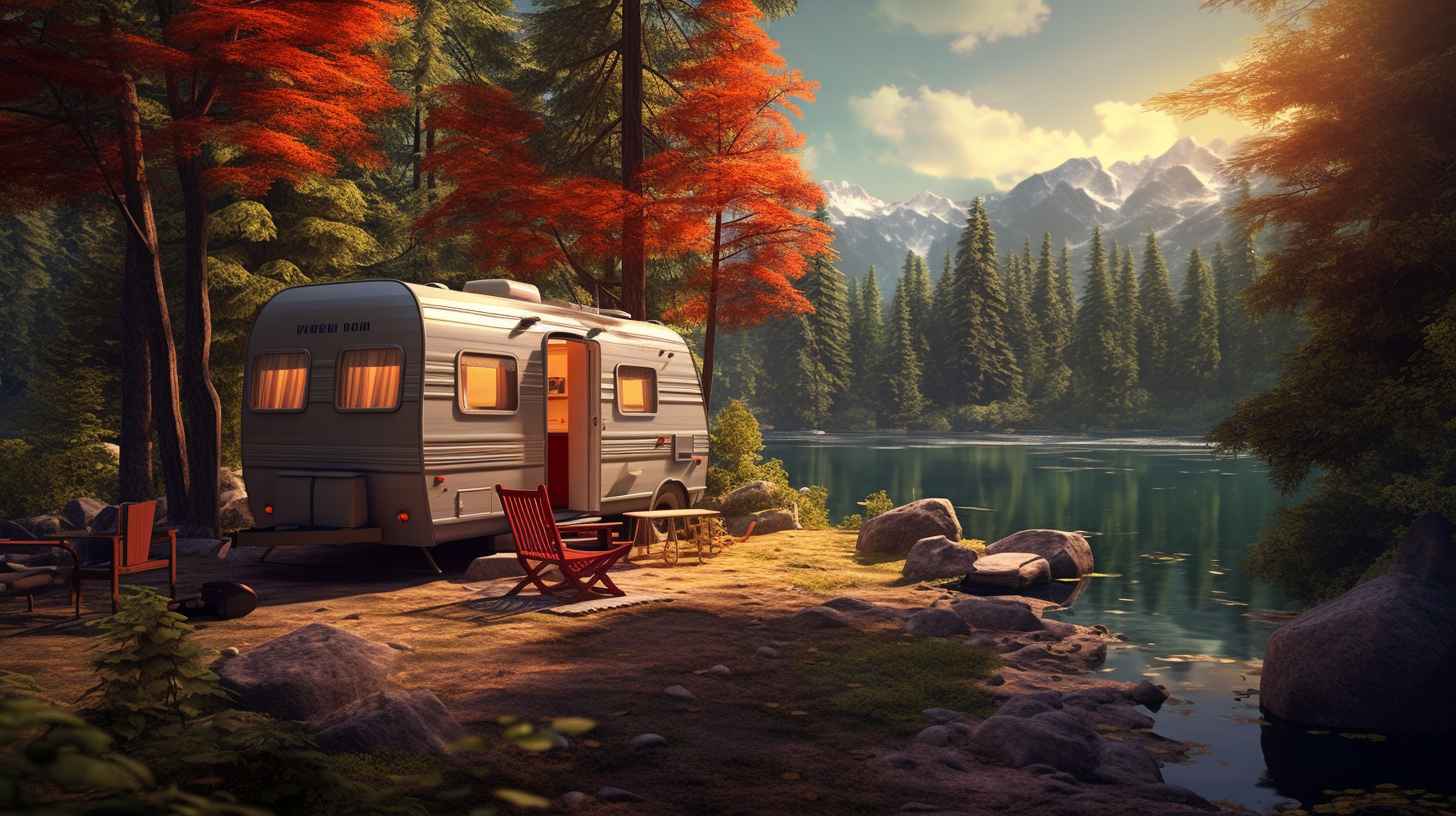
Do Camping Propane Tanks Come Filled

Imagine this: you’re out in the wilderness, ready to start your camping adventure. But wait, do you have enough fuel for cooking and heating? That’s where camping propane tanks come in.
But here’s the question: do they come filled? In this article, we’ll explore the importance of propane](https://www.justcamping.site/blog/Can_You_Use_Propane_on_a_Camping_Gas_Stove.html) tanks for camping and guide you through the process of checking if your tank is filled.
Get ready to learn how to fuel up and make the most of your [outdoor experience.
Key Takeaways
- Propane tanks are essential for camping as they provide fuel for cooking, heating, and other activities.
- Propane tanks are designed to be sturdy, secure, and portable, making them convenient for camping.
- When purchasing propane tanks, consider factors such as size, safety features, and compatibility with camping equipment.
- Propane tank suppliers follow strict safety guidelines when refilling tanks and prioritize safety measures during handling and filling.
Importance of Propane Tanks for Camping
You need propane tanks for camping because they provide fuel for cooking, heating, and other essential activities. Propane is a commonly used fuel source for camping due to its convenience and versatility. One of the benefits of using propane for camping is its safety. Propane tanks are designed to be sturdy and secure, minimizing the risk of leaks or accidents.
Additionally, propane is a clean-burning fuel, meaning it produces fewer emissions and is less harmful to the environment. Propane tanks are also portable and easy to transport, making them ideal for camping trips. They come in different sizes to accommodate various needs and can be easily refilled or exchanged at many camping supply stores.
Factors to Consider When Purchasing Propane Tanks
When purchasing propane tanks for camping, it’s important to consider various factors that will ensure you choose the right tank for your needs.
Firstly, you should consider the size of the tank. Larger tanks may provide more fuel, but they can be heavy and take up more space. Smaller tanks are more portable but may not last as long.
Secondly, check the tank’s safety features. Look for tanks with built-in pressure gauges and safety valves to prevent overfilling and leaks.
Additionally, consider the tank’s compatibility with your camping equipment. Ensure that the tank’s connection matches the fittings on your stove or grill.
Finally, it’s crucial to follow safety precautions when using propane tanks while camping. Always store and transport tanks in an upright position, away from heat sources, and never inside a tent or vehicle. Regularly inspect the tank for any damage or rust and replace if necessary.
Common Practices of Propane Tank Suppliers

Propane tank suppliers commonly refill camping propane tanks on a regular basis. When it comes to safety measures, propane tank suppliers follow strict guidelines to ensure that the tanks are handled and filled properly. They adhere to safety protocols such as inspecting the tanks for any signs of damage or corrosion before refilling them. This is done to prevent any potential leaks or accidents.
In addition, suppliers use specialized equipment and tools to connect the propane tank to the filling station. There are different types of propane tank connectors available, including the ACME thread and the POL connection. These connectors are designed to provide a secure and leak-proof connection between the tank and the filling station.
It’s important to follow the instructions provided by the supplier when connecting and disconnecting propane tanks to ensure safety and prevent any mishaps.
How to Check if Your Camping Propane Tank Is Filled
To determine if your camping propane tank is filled, simply give it a gentle shake. If you hear a sloshing sound, it means the tank isn’t completely filled. On the other hand, if you don’t hear any sound or the tank feels heavy, it’s likely full.
However, this method isn’t foolproof and it’s always recommended to use a more accurate method to check the propane level. One way to do this is by using a propane tank gauge, which can be easily attached to the tank to provide an accurate reading of the propane level.
Another option is to use a specialized propane level indicator that uses ultrasound technology to measure the amount of propane left in the tank.
Tips for Filling and Maintaining Your Propane Tank

If you want to ensure the proper filling and maintenance of your camping propane tank, there are a few tips you should keep in mind. Following these guidelines will help you prioritize propane tank safety and adhere to propane tank regulations:
-
Regularly inspect your propane tank for any signs of damage or wear. Look for rust, dents, or leaks. If you notice any issues, have them repaired or replaced immediately.
-
When filling your propane tank, make sure to use a certified propane dealer or refill station. They’ll have the necessary equipment and knowledge to safely fill your tank.
-
Always store your propane tank in a well-ventilated area that’s away from any sources of heat or ignition. This will reduce the risk of a fire or explosion.
-
Keep your propane tank secure and upright at all times, especially during transportation. Use straps or bungee cords to prevent it from tipping over or rolling around.
Conclusion
In conclusion, when it comes to camping propane tanks, it’s important to consider factors such as size, weight, and safety features.
While some suppliers may sell pre-filled tanks, it’s always a good idea to check the tank’s gauge before heading out on your camping trip.
Remember, ‘better safe than sorry,’ so make sure to follow proper procedures for filling and maintaining your propane tank to ensure a worry-free camping experience.
Disclaimer: Some information is provided through AI. Users should always conduct their own research and consult with qualified professionals before making any decisions.Affiliate information declaration: We may earn revenue from the products referred on this page and participate in affiliate programs.


